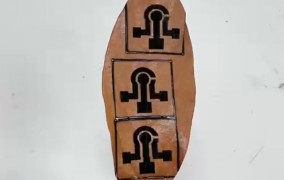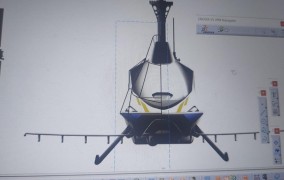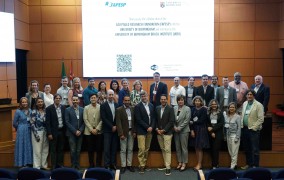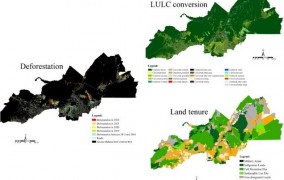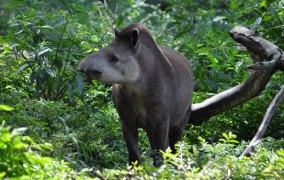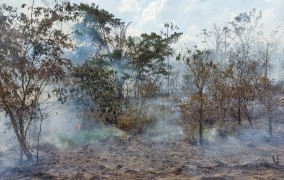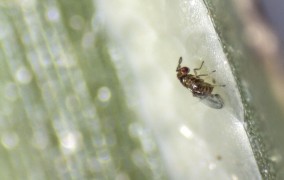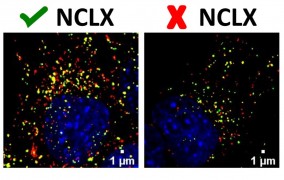
Search: 4362 news
-
Novel technique can improve quality of animal embryos produced in vitro
2024-05-22Researchers at a startup supported by FAPESP have developed a material that mimics conditions in the uterus and could result in a 32% rise in bovine embryo production. -
FAPESP, São Paulo State Government and German university THI sign cooperation agreement
2024-05-22The aim is to fund bilateral projects in the field of artificial intelligence, focusing on mobility, energy and security. -
Drought in the Cerrado (Neotropical savanna) is the worst for at least seven centuries, study shows
2024-05-22Chemical analysis of stalagmites in the Peruaçu Caves National Park showed that global warming has disrupted the hydrological cycle in Brazil’s central region, making a significant proportion of any rain that falls evaporate before it can penetrate the soil. -
Proteins modified in lungs offer clues to biological functions of bromine
2024-05-22Researchers at a FAPESP-supported research center showed that the addition of bromine to extracellular matrix proteins is a physiological modification dependent on the enzyme peroxidasin – the study extends knowledge of the scope of this enzyme’s activity in the mammalian organism. -
World experts create document on AI capabilities and risks
2024-05-15Director of the Institute of Mathematical and Computer Sciences at the University of São Paulo collaborates with work developed in the UK to guide governments. -
RCGI joins Shell’s energy transition center in the Netherlands
2024-05-15The new office is expected to serve as a research hub for the Research Center for Greenhouse Gas Innovation in Europe, fostering international partnerships. -
Aerobic exercise performed in the evening benefits elderly hypertensives more than morning exercise
2024-05-15A study conducted at the University of São Paulo with 23 volunteers found that only evening training regulated baroreflex sensitivity, a mechanism that compensates for abrupt changes in blood pressure. -
Plasma treatment of semiconductor films can improve hydrogen production
2024-05-15In an experiment resulting from collaboration between two FAPESP-supported research centers, a material was modified for use in solar-driven water splitting to produce hydrogen. -
A startup supported by FAPESP is conducting one of the largest studies on Huntington’s disease
2024-05-15BioDecision has developed a methodology that combines RNA sequencing and big data to offer the pharmaceutical industry molecular targets of interest for treatment of the disease. -
Researchers conduct first-ever study to characterize microbiota in saliva of weaned piglets on commercial farms in Brazil
2024-05-15Results show that oral fluid bacteria differ from fecal and environmental bacteria. Identification of these microorganisms can help diagnose infectious diseases and improve pork production. -
São Paulo School of Advanced Science presents innovative approach to environmental issues
2024-05-15Focus on transdisciplinarity aims to foster participation by all stakeholders in efforts to address global change. The subject was front and center at an event held in April 2024 at a historic town in São Paulo state. -
Bruxism is frequently observed in patients with post-traumatic stress disorder
2024-05-15This study was conducted at the University of São Paulo and published in Clinical Oral Investigations; the authors emphasize the importance of collaboration between dentists and psychiatrists to improve diagnosis and treatment. -
In a reservoir in Southeast Brazil, introduction of a fish native to the Amazon has reduced native species diversity
2024-05-13Since 2001, when it was first recorded in the Jaguarai reservoir in São Paulo state, the Silver croaker (Plagioscion squamosissimus) has established and increased its population in the Paraíba do Sul Basin to the detriment of native fish species. -
Brazilian researcher receives one of the most important awards in the field of glass materials
2024-05-08Edgar Dutra Zanotto, coordinator of the Center for Teaching, Research and Innovation in Glass, was invited by the American Ceramic Society to give the Varshneya Frontiers of Glass Science Lecture. -
Educational game raises awareness among young people about measures to combat dengue fever
2024-05-08Game challenges the player to find and eliminate all Aedes aegypti mosquito hotspots. -
Laser printing on fallen tree leaves produces sensors for medical and laboratory use
2024-05-08Leaf cellulose is converted by pyrolysis to graphite, which is printed in the right shape for the surface to function as a sensor. Tests to determine concentrations of dopamine and paracetamol confirmed that the sensor performed successfully. -
Third 2024 FAPESP Lecture discusses training of physician-scientists in the United States
2024-05-08The lecture was delivered by Antonio Bianco, a professor of medicine at the University of Chicago who has won several awards for research in the thyroid field. -
Brazilian startup designs self-flying aerial vehicle for crop spraying
2024-05-08The firm is supported by FAPESP and is developing an autonomous helicopter capable of spraying crops on steep hillsides. -
Study focusing on primary care seeks to improve diagnosis and management of chronic obstructive pulmonary disease
2024-05-08The project, conducted by researchers affiliated with the University of São Paulo in Brazil and the University of Birmingham in the UK, was one of 15 presented at an event held to celebrate the partnership between the British institution and FAPESP. It also marked the launch of the University of Birmingham Brazil Institute, whose mission is to bolster UK-Brazil research collaboration. -
Cocaine is an emerging contaminant of concern in the Bay of Santos (Brazil), says researcher
2024-05-08The drug accumulates not only in water, but also in sediments and marine organisms, and poses a high ecological risk, said Camilo Seabra, a professor at the Federal University of São Paulo, during FAPESP Week Illinois. -
Almost 30% of children and adolescents experience pain in muscles, bones or ligaments, study shows
2024-05-08A survey conducted in Brazil provides an overview of musculoskeletal pain in the very young. Back pain and leg pain were the most frequent complaints among 2,688 volunteers aged 12 on average. -
In Brazil, 76% of deforestation in three Amazonian states occurred in a planned agricultural development zone
2024-05-06The researchers showed that pressure has intensified since the 2018 announcement of a plan to create a development zone where the states of Amazonas, Acre and Rondônia meet. -
Loss of large herbivores affects interactions between plants and their natural enemies, study shows
2024-05-06Researchers in Brazil compared leaf damage caused by insects and pathogens in areas with and without the presence of mammals such as tapirs, deer and peccaries. Absence of the animals led to loss of microorganisms that cause leaf disease, potentially affecting long-term eco-evolutionary processes and reducing biodiversity in tropical forests. -
Wildfires in old-growth Amazon forest areas rose 152% in 2023, study shows
2024-05-01The increase was confirmed by an analysis of satellite images, contrasting with a drop in deforestation and the total number of fires detected in the Amazon. The Brazilian government’s center for forest fire prevention says it is partnering with other institutions to combat wildfires in the region. -
Registration of biological pest control products exceeds that of agrochemicals in Brazil
2024-05-01Around 90% of the sugarcane area in Brazil now uses natural enemies to combat agricultural pests; data were presented during FAPESP Week Illinois. -
Test will permit relatively non-invasive detection of micrometastasis
2024-05-01A Brazilian startup supported by FAPESP is developing a solution to detect a biomolecule linked to the presence of migratory oral cancer cells. -
Study helps understand how energy metabolism is regulated at cellular level
2024-05-01An article published by a FAPESP-supported research center highlights the link between mitochondrial calcium transport and autophagy, the process whereby cells break down and reuse some of their own components. -
International group runs simulations capable of describing South America’s climate with unprecedented accuracy
2024-05-01The aim is to create a computer visualization model that more accurately represents the hydroclimatic processes that occur in the region and to support climate change adaptation measures; the initiative was presented during FAPESP Week Illinois. -
Analysis of flour and rice shows high levels of harmful fungal toxins
2024-05-01The foods, found in the homes of Brazilian families participating in the research, were stored for future consumption. The study is the first in Brazil to use biomarkers to characterize the risk associated with mycotoxins in the diet. -
Research shows link between pollution and heart risks in residents of the city of São Paulo, Brazil
2024-04-29A study by the University of São Paulo, published in the journal Environmental Research, analyzed the results of the autopsies of 238 people and epidemiological data; the risk is greater for hypertensive patients.
Most popular
-
Amazon scorpion toxin kills breast cancer cells
2025-06-18
-
Spending more than 3 hours a day sedentary worsens teens’ mental health
2025-02-20
-
Climate change could drastically reduce aquifer recharge in Brazil
2025-09-17
-
Microplastics may affect bone health
2025-09-17
-
‘Science alone will not save us’: Paulo Jannuzzi highlights the need for republican values
2025-09-17
-
Butantan Institute says its dengue vaccine protects against serotype 3
2025-02-05
-
FAPESP aims to boost the development of quantum technologies in Brazil
2025-01-15
-
Molecule reverses cognitive deficits associated with aging and dementia in animal tests
2025-05-12
-
Ants defend plants from herbivores but can hinder pollination
2025-09-15
-
Personality traits influence the development of insomnia
2025-05-19




















